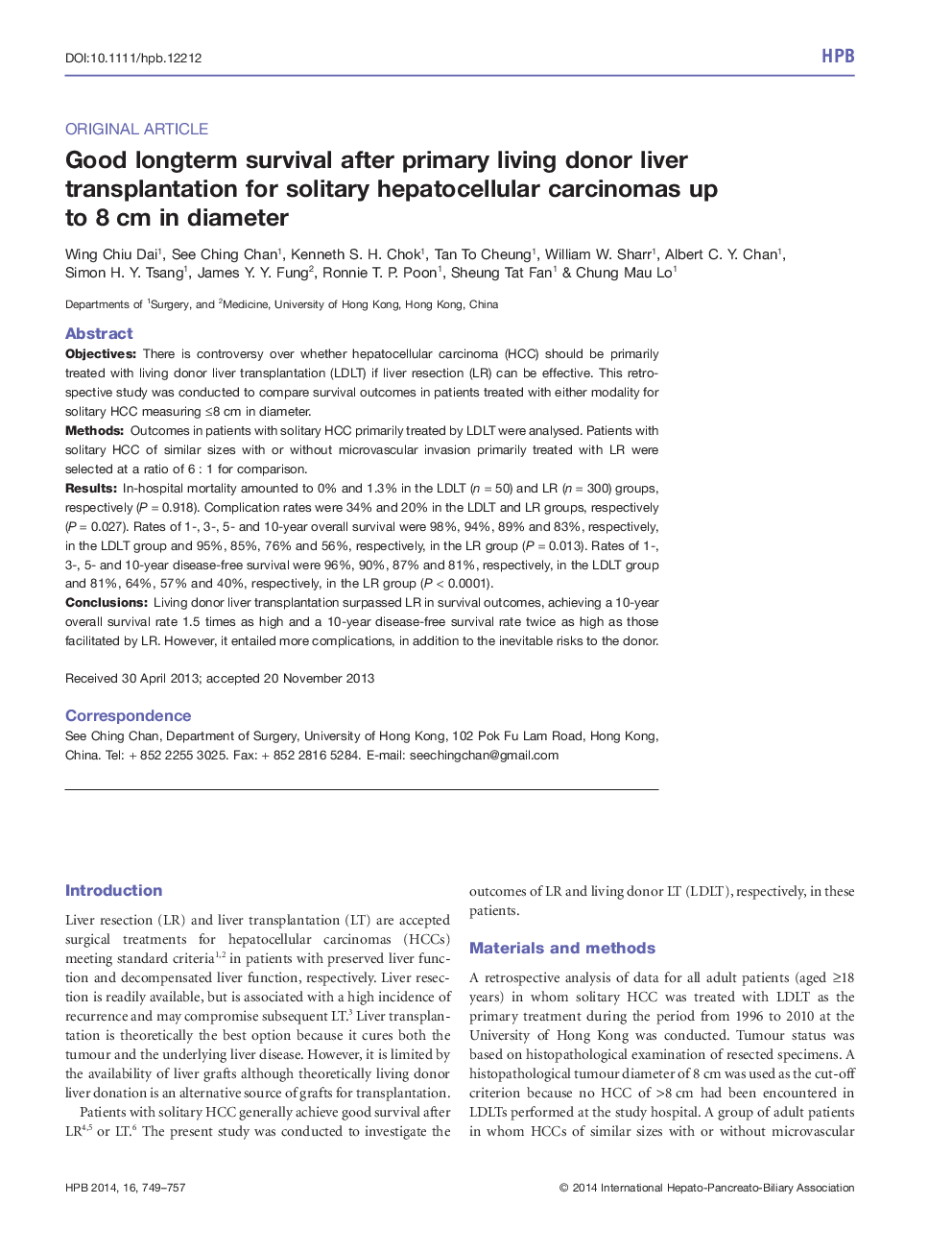| Article ID | Journal | Published Year | Pages | File Type |
|---|---|---|---|---|
| 3268982 | HPB | 2014 | 9 Pages |
ObjectivesThere is controversy over whether hepatocellular carcinoma (HCC) should be primarily treated with living donor liver transplantation (LDLT) if liver resection (LR) can be effective. This retrospective study was conducted to compare survival outcomes in patients treated with either modality for solitary HCC measuring ≤8 cm in diameter.MethodsOutcomes in patients with solitary HCC primarily treated by LDLT were analysed. Patients with solitary HCC of similar sizes with or without microvascular invasion primarily treated with LR were selected at a ratio of 6 : 1 for comparison.ResultsIn-hospital mortality amounted to 0% and 1.3% in the LDLT (n = 50) and LR (n = 300) groups, respectively (P = 0.918). Complication rates were 34% and 20% in the LDLT and LR groups, respectively (P = 0.027). Rates of 1-, 3-, 5- and 10-year overall survival were 98%, 94%, 89% and 83%, respectively, in the LDLT group and 95%, 85%, 76% and 56%, respectively, in the LR group (P = 0.013). Rates of 1-, 3-, 5- and 10-year disease-free survival were 96%, 90%, 87% and 81%, respectively, in the LDLT group and 81%, 64%, 57% and 40%, respectively, in the LR group (P < 0.0001).ConclusionsLiving donor liver transplantation surpassed LR in survival outcomes, achieving a 10-year overall survival rate 1.5 times as high and a 10-year disease-free survival rate twice as high as those facilitated by LR. However, it entailed more complications, in addition to the inevitable risks to the donor.
